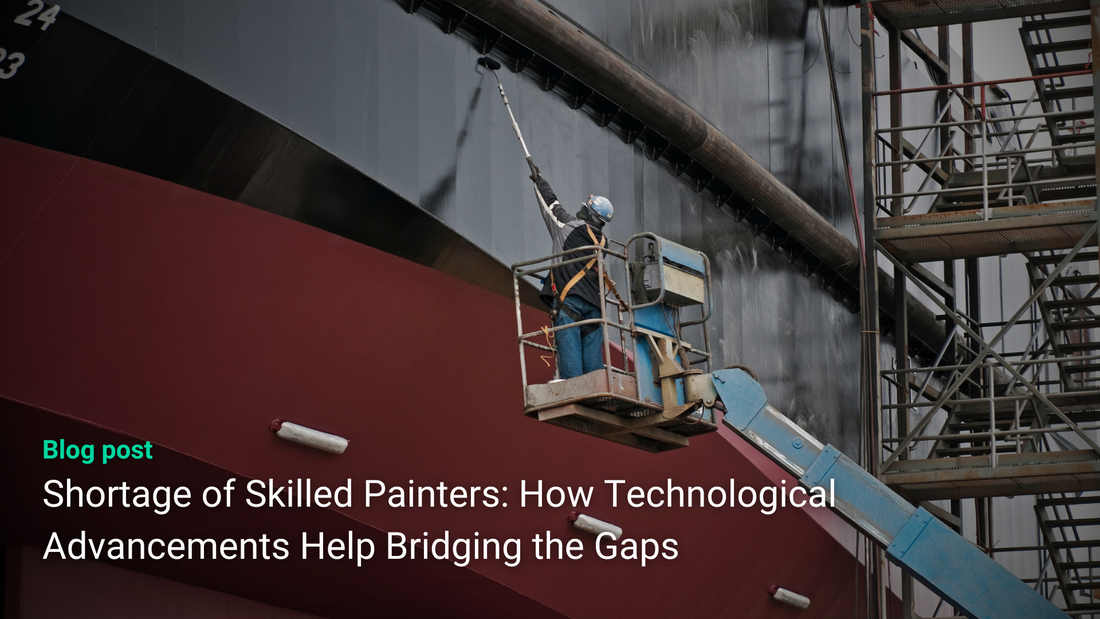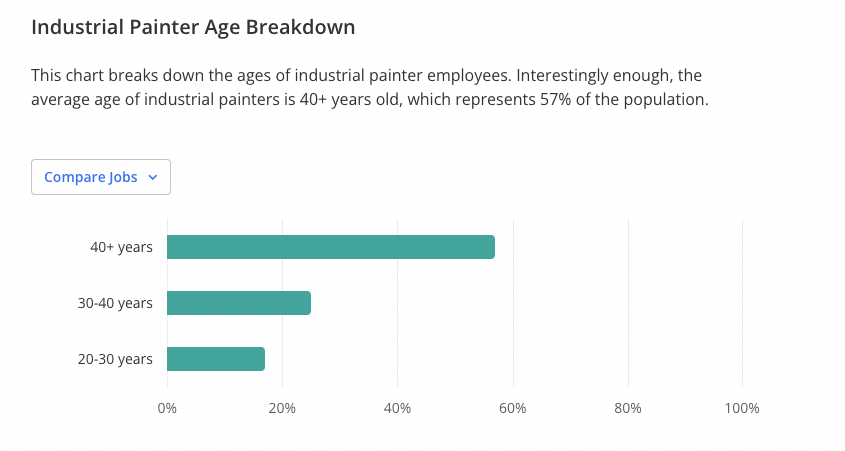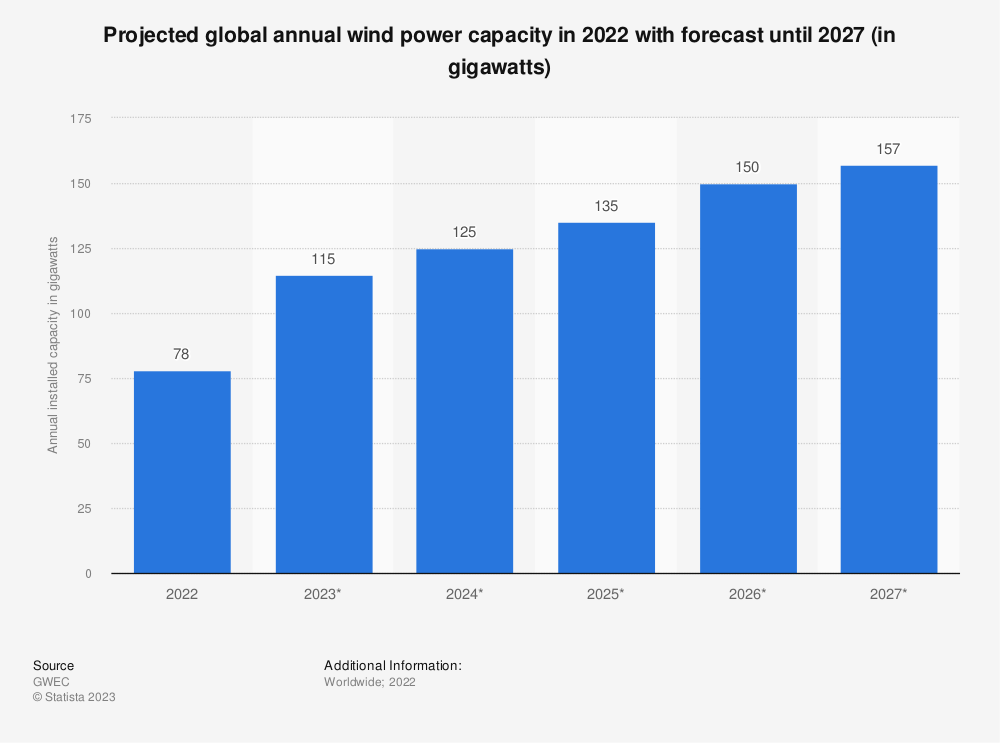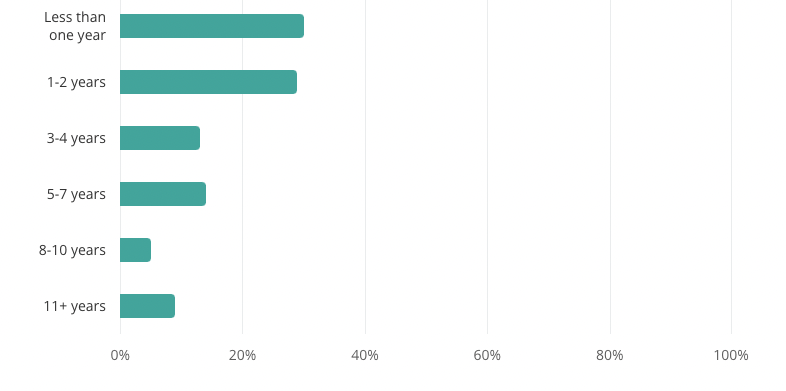|
In the ever-evolving world of industrial coatings, where asset owners and coating contractors tirelessly combat the relentless forces of nature to protect their valuable and expansive assets from corrosion damage, a concerning issue looms large — a scarcity of skilled painters to aid in this crucial endeavour. The labor markets themselves echo the concerns of coating experts, as the demand for qualified painters surpasses the available supply, casting a shadow over the future of the coating industry and leaving professionals yearning for solutions. As the number of skilled painters continues to decrease, the workload they face will continue to accumulate at an alarming rate, especially in the context of the fast-growing global industrial coatings market. In 2021, the industry market was valued at USD 102.0 billion. It is projected to reach USD 116.0 billion by 2026, growing at a compound annual growth rate (CAGR) of 2.5% during the same period. (4) Moreover, the market for wind turbines is also on the rise due to the growing demand for wind power. When we combine these factors with the ongoing workforce trend, it becomes evident that painting companies are grappling with the challenge of fewer painters shouldering an ever-increasing number of jobs. The reasons behind shortage of skilled painters: To solve the problems, we must first understand how they took root. Besides the departure of seasoned painters, the coating industry is encountering difficulties in making itself appealing to young talents. For the longest time, the painting industry has been struggling to detached itself from the outdated stigma attached to “blue-collar” jobs, involving dirty and physically demanding work. The nature of the job also exposes painters to various health risks, including exposure to hazardous substances and physical strain. This resulted in a high turnover rate as many painters leave the profession due to sickness or injuries. By looking over 71,809 painters resumes, Zippia figured out that the average painter enjoys staying at their job for “Less than 1 year” accounted for a striking 30%. (3) For instance, the constant exposure to toxic chemicals and airborne particles can lead to respiratory issues and long-term health complications. Painters often work in confined spaces, at heights, or in challenging environments with limited ventilation, further increasing these health risks. Lack of proper protective gear and inadequate training further deepens the problem. Moreover, the physically demanding nature of the job takes a toll on painter’s bodies. They are required to perform tasks that involve heavy lifting, prolonged standing, and repetitive movements, leading to musculoskeletal injuries and chronic pain. The absence of ergonomic equipment and poor work practices contribute to these injuries. (5) The way forward In order to attract new talent to the industrial coating industry, it is also crucial for the coating industry to embrace technological advancements. Recent surveys, such as Uptree's student survey from last year, have revealed that 42% of 16-21-year-olds express interest in STEM fields (Science, Technology, Engineering, and Math). By embracing these advancements and providing upskilling opportunities in digital tools and equipment, the industry can captivate a new generation of tech-savvy painters. Blending traditional craftsmanship with cutting-edge technology enables cultivating a workforce that adeptly meets the demands of the modern coating industry. (6) Recognizing the needs for changes, several pioneering companies have emerged with groundbreaking solutions that have transformed different facets of the industry. One notable advancement is the introduction of robotic blasting systems, which have revolutionized the surface preparation process. These systems automate the blasting process, leading to improved precision and reduced human exposure to hazardous environments. Designed to operate in confined spaces, they ensure consistent and thorough surface preparation while minimizing risks to workers. Advanced inspection technologies have also emerged, enabling accurate and efficient assessment of coating quality. Digital inspection equipment, including coating thickness gauges, holiday detectors, and surface profile meters, enhance quality control, ensure compliance with industry standards, and help identify potential issues early on. When it comes to spraying systems, there are a lot of innovative solutions designed to optimise painting application processes. Products like airless spraying systems and electrostatic guns offer higher coating speed and higher-quality coating finishes. These examples highlight just a few of the products that can significantly enhance the efficiency and quality of a coating project. In addition, there have been a lot of new automated coating solutions developed for a variety of situations, and one of the latest and most unique is 10Q™ robot from Qlayers. It’s the industry's first automated paint robot designed to apply protective coatings on storage tank exteriors. What sets Qlayers apart is the patented spray shielding system, which eliminates overspray during the coating processes, prioritizing the safety of painters and the surrounding environment by minimizing exposure to hazardous substances. The patented spray shielding system also allows the robot to coat surfaces with high precision, accurate layer thickness and high transfer efficiency (up to 90%). In addition, the system is designed with the paint crew's safety in mind, can be operated from a secure position on the ground, effortlessly controlled by a handy controller. By reducing the need for painters to work at heights, this groundbreaking technology allows them to focus on more valuable and rewarding tasks while the robot handles the physically demanding aspects of the job. Implementing robotic automation can increase productivity, decrease reliance on human labor, and alleviate the shortage of skilled painters. Technological advancements offer opportunities to automate and optimize industrial coating processes, enhance productivity, improve quality, and meet the growing demand for industrial coating services. Simultaneously, new technological advancements can play a crucial role in attracting new talents, especially young painters, to the field of industrial coating. Younger generations are often drawn to innovative and cutting-edge technologies. The use of robotic automation, virtual reality, and IoT devices in the painting process can be intriguing for aspiring painters. The opportunity to work with advanced tools and technologies can be a motivating factor for young individuals to pursue a career in industrial coating. The demand for skilled individuals who can work alongside advanced tools and technologies is likely to remain strong, ensuring ongoing job opportunities in the industry. Therefore, by showcasing the exciting possibilities that technology brings to the field of industrial coating, young talents can be encouraged to explore and pursue careers in this industry. Reference:
|
Authors
We will share different technology advances, innovations or knowledge from members of our team. |
|
MORE INFORMATIONChamber of Commerce: 69486549
Tax number: NL857890852B01 Qlayers has a Privacy Policy
|









